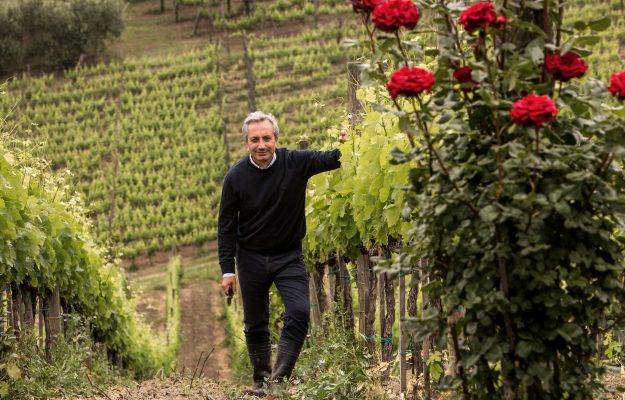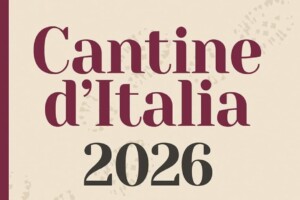At the heart of Moio’s thinking is the “perfect grape”, one with a naturally balanced composition, a condition for practicing what the new OIV president calls “light enology”. That is winery practices that can be traced back to process assistance, excluding corrective interventions. This starting point highlights the cornerstone on which quality wine-growing is based: the suitability of the growing area. This was the thread that guided the Lectio magistralis by Luigi Moio, one of the most renowned wine scientists (and producer in Campania with the Quintodecimo winery) in his first outing as president of the International Organisation of Vine and Wine (OIV), staged at the University of Padua’s Cirve (Interdepartmental Centre for Research in Viticulture and Oenology) at the event organized in Conegliano by Eugenio Pomarici, a former colleague at the Federico II University in Naples and the OIV and “responsible” for Moio’s entry into the intergovernmental body.
A lecture in which Professor Luigi Moio outlined the scientific direction he intends to take in his term of office, indicating the future guidelines for viticulture and enology research oriented towards sustainability, in order to cope with the current emergencies, both climatic and environmental, and to allow vines to remain in the areas of the countries that have made wine history. “Grapes are the perfect fruit for making wine, the only single-ingredient alcoholic beverage”, began Moio, “provided that the components are in perfect balance, which they are if the plant is in tune with the environmental context, and this allows the winemaker to limit himself to overseeing the fundamental processes of transformation into wine. This is the only way to produce wines of great longevity, which cannot be achieved if you intervene oenologically to adjust this or that parameter”.
This is an increasingly rare condition considering global warming, which puts the expression of terroir at risk, particularly in traditional producer countries. As temperatures rise, climatic zones overlap, the differences between wines become increasingly blurred, resulting in a loss of identity and appeal. Some varieties suited to the pre-existing pedoclimatic context are already suffering: on Merlot, Cabernet, Chardonnay, among the most widespread in the world, acidity collapses and pH rises have occurred. This makes it difficult to manage winemaking without corrections.
“On the one hand”, Moio stressed, “we must strongly slow down climate change, for which we are largely responsible, by pursuing the objectives set at international level regarding the ecological transition, and on the other hand relaunch and finance research to produce new varieties, including disease-resistant ones, in order to reduce defense measures and environmental impact. Time is short and a delay would be unforgivable. It is necessary to intervene on the vine, as in the past, with genetic improvement to adapt the plants to the new conditions. We have great genetic variability and new tools, such as genome editing, to “fix” interesting traits and speed up in this direction”.
This indication is in line with the tasks of the OIV which, as Mario Fregoni, OIV president for the three-year period 1985-87, recalled, “is a scientific institution”. In this scenario, for Italy, “what appeared to be a weakness in the past can be transformed into a strength”, explained Moio. The reference is to Italy’s great wealth of historic vines, which need to be pushed further, and to the diversity of soil, climate and terrain throughout the Peninsula. Most of them, moreover, cycle for a long time and suffer less by being in tune with the various pedoclimatic contexts. “This is why”, he continued, “Italy’s wine is a planetary model of diversity and biodiversity with no competitors. It is enough to compare the Italian ampelographic platform with the French one based on 20-30 grape varieties, which we count by region. We have major and minor grape varieties, yet to be studied, the source of potentially key genes for solving problems in the former”. Italian viticultural diversity translates and must continue to translate, into the different identities of territorial wines. A challenge that can also be met by reducing the oenological corrections - such as acidity and alcohol content - that risk becoming increasingly necessary in the face of climate change. So the genetic improvement of the micro-organisms involved in wine fermentation can have a very positive impact in the direction of greater environmental and economic sustainability.
In this area”, said Moio, “research should be directed towards yeasts that ferment well even at 7-8 °C so as to carry out correct fermentation in cold places without having to heat the cellars or, vice versa, without having to cool them by having micro-organisms that ferment correctly even at 30 °C. The same applies to bacteria, which need 22-25 °C to complete malolactic fermentation in red wines. The same applies to bacteria, which need 22-25 °C to complete malolactic fermentation in the case of red wines. The reduction of SO2 also requires the availability of yeasts that do not produce molecules that bind to sulfur dioxide, reducing the free sulfur dioxide available as an antioxidant”.
On the other hand, when it comes to labeling, there are two issues on the table: ingredients and calories, on which several OIV member countries are pushing. “When I hear people talk about ingredients, I don’t react well, because wine should be a “single-ingredient” drink”, specified Moio. A great deal of work has been done at the OIV to differentiate coadjuvants (editor’s note: these do not remain in the finished product) from additives used to correct acidity or other variables, which can be eliminated by chemical processes. It is clear that these are not ingredients. Moreover, there are physical systems to avoid their use (filtrations, cold stabilization, ion exchange systems). The only additive that remains in wine is sulfur dioxide, but this has been indicated on the label for some forty years (editor’s note: it contains sulfites). In order to be transparent to the consumer, I think a code could be put on the label that would direct the consumer to the list on the winery’s website. Explaining the calories on the label would be misleading because it makes no sense to choose wine on the basis of the caloric content of the alcohol, which is almost the same in all the wines of the world and varies from 83 to 99 kilocalories per 125 milliliters in the case of a 12° wine with no residual sugar. The criteria for choosing a wine are other, linked to a territory, a vineyard, the men who produced it, history, culture and the beauty of the landscape. So if we were to go in this direction, I believe that wine would not suffer. If anything, the correct information should concern alcohol and the problems it causes”.
Moio’s lecture solemnized the new Italian presidency of the International Organisation of Vine and Wine (OIV), 40 years after the previous one, sanctioning the excellence of the Italian delegation's skills over the years, of which Moio, professor of enology at the Neapolitan University, has been part for many years with numerous colleagues holding top positions (president of the group of technology experts, of the Oenology Commission, vice-president of the Organisation and president of the Scientific Technical Committee). Moio’s election to the presidency - undoubtedly for undisputed merits - required considerable institutional and diplomatic commitment, as reconstructed by Michele Alessi of the Ministry of Agriculture, Food and Forestry Policies and Nico Frandi of the Permanent Representation of Italy to the International Organisations in Paris. The presidency of the International Organisation of Vine and Wine (OIV) - although the role demands a super partes position - will be important for Italy. Federico Castellucci, director-general of the OIV from 2004 to 2013, emphasized the political weight of the organization - whose unanimous resolutions automatically become law in the member countries - and the importance of the work of the Italian delegation over the years, stressing, in particular, the work of the Economic Commission under the chairmanship of Eugenio Pomarici, the first to bring the issue of sustainability to the attention of the Technical and Scientific Committee.
Copyright © 2000/2025
Contatti: info@winenews.it
Seguici anche su Twitter: @WineNewsIt
Seguici anche su Facebook: @winenewsit
Questo articolo è tratto dall'archivio di WineNews - Tutti i diritti riservati - Copyright © 2000/2025









































































































































































































